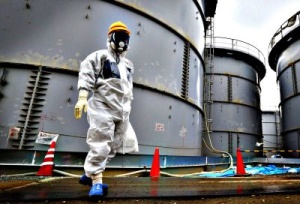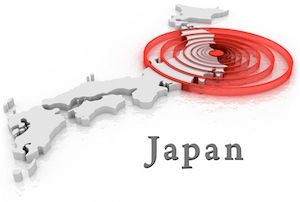 SGT Report -My new friend and nuclear activist Lonnie Clark joins me to discuss the March 11, 2011 event that changed the world forever: the Japanese earthquake which led to the Fukushima disaster and ensuing nightmare.
SGT Report -My new friend and nuclear activist Lonnie Clark joins me to discuss the March 11, 2011 event that changed the world forever: the Japanese earthquake which led to the Fukushima disaster and ensuing nightmare.
Lonnie Clark is a radio host at UCY.TV, her show is ‘The Age of Fission’. Lonnie also helped create The Post Ignorance Project with Kevin Blanch, an effort to wake up the world to the Pacific Genocide.
[youtube=https://youtu.be/N6nExVlbU1A]
On this call Lonnie and I discuss the fact that Fukushima radiation cannot be stopped, so the Japanese and United States governments simply ignore it or argue that “a little radiation is good for you”. Lonnie and I conclude that ultimately it’s all part of the ongoing depopulation agenda, demonic in its brilliance and scope.
Lonnie’s Show airs M, W, F from 8-9 am PST, show info & archives can be found HERE.
http://ucy.tv/Default.aspx?PID=130&am…
For REAL News & Information 24/7: http://sgtreport.com/ and http://thelibertymill.com/
Fukushima Daiichi nuclear disaster
Safety concerns
1967: Layout of the emergency-cooling system
Fukushima reactor control room.On 27 February 2012, NISA ordered TEPCO to report by 12 March 2012 regarding its reasoning in changing the piping layout for the emergency cooling system. These changes were made after the plans were registered in 1966 and the beginning of construction.
The original plans separated the piping systems for two reactors in the isolation condenser from each other. However, the application for approval of the construction plan showed the two piping systems connected outside the reactor. The changes were not noted, in violation of regulations.[77] Continue reading

 Fukushima will likely go down in history as the biggest cover-up of the 21st Century.
Fukushima will likely go down in history as the biggest cover-up of the 21st Century. Arjun Walia – As most of you reading this already know, 2011 bore witness to one of the darkest days of human environmental history. That year, a nuclear disaster occurred at the Fukushima Nuclear Power Plant after a massive 9.0 earthquake triggered a tsunami, resulting in the nuclear meltdown of three of the plant’s six nuclear reactors.
Arjun Walia – As most of you reading this already know, 2011 bore witness to one of the darkest days of human environmental history. That year, a nuclear disaster occurred at the Fukushima Nuclear Power Plant after a massive 9.0 earthquake triggered a tsunami, resulting in the nuclear meltdown of three of the plant’s six nuclear reactors.